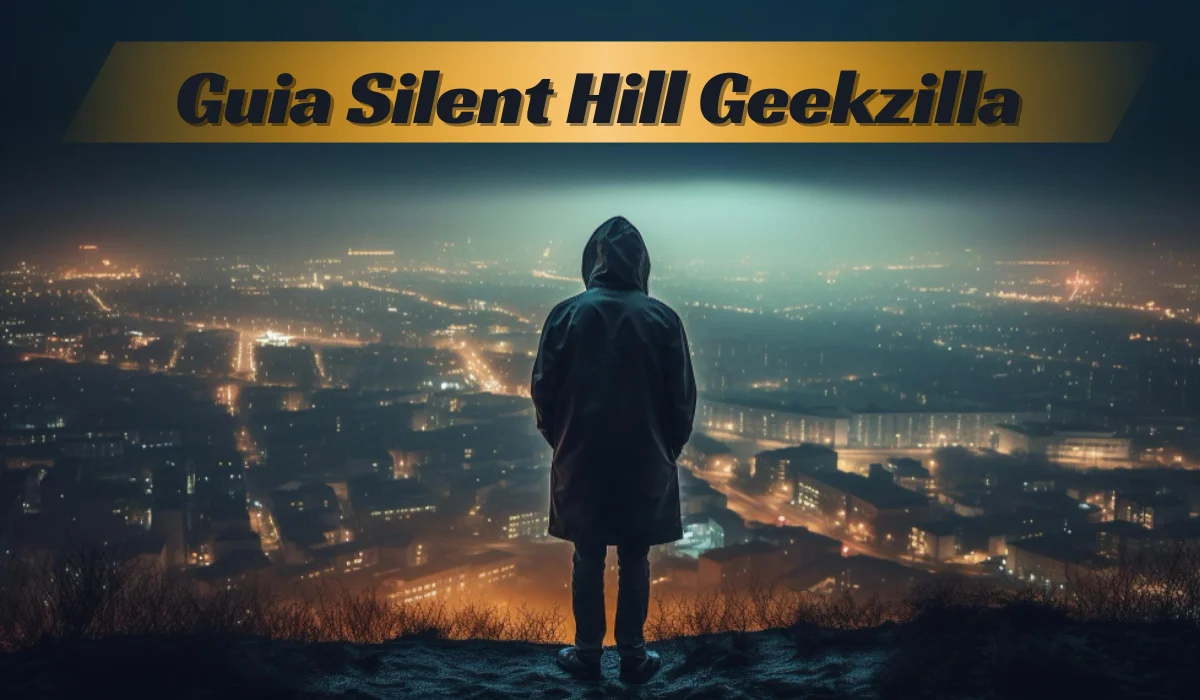Guia Silent Hill Geekzilla stands as a ghostly beacon at the intersection of horror and gaming. Since its inception, the franchise has been the stomping ground for those who crave a deeper brand of terror—a psychological nightmare where atmospheric dread and personal demons are as formidable as the grotesque monstrosities that lurk in the fog.
For the impeccable Silent Hill fan – and entertainingly obsessive gamer – Guia Silent Hill Geekzilla presents a compendium that traverses through the abandoned lanes of the town that horror built, exploring the very fibers of what makes Silent Hill an unforgettable gut-twister.
Silent Hill: A Claustrophobic Canvas
The Silent Hill series is characterized by its innate ability to create a stifling atmosphere, using darkness, sound design, and minimalist approach to storytelling, placing the player at the center of its ominous ambiance.
The Birth of Nightmares
The inaugural game, released in 1999 by Konami, introduced the world to the eponymous fog-shrouded town. Its protagonist, Harry Mason, wanders the deserted streets in search of his missing daughter, perpetually one heartbeat from disaster.
An Iconic Cast
Despite the limited graphical power of the era, Silent Hill game characters were eerily defined, each with a distinct and purposeful design.
Sound and Vision: The Artistic Direction of Terror
Silent Hill sculpts its terror not just from the visual, but the auditory senses too. The game relies heavily on creating discomfort through an immersive soundscape and haunting visuals that linger well after the final credits have rolled.
Music to a Monster’s Ears
The frigid soundtracks created by Akira Yamaoka are crucial for the Quiet Slope insight. Yamaoka’s industrial, rock-infused scores provide an unsettling backdrop, seamlessly shifting to accommodate the player’s sense of dread.
A Gore-geous Presentation
The art direction of Silent Hill is as morbidly beautiful as it is disturbing. The creature designs often mirror psychological pain, with contorted shapes and rusted metal blades serving as metaphors for torment. The iconic transformation scenes into the Otherworld are a visual feast of grotesque mutation, growing and stretching across the landscape.
Crafting Fear Through Gameplay
Interactivity in the Quiet Slope series is intended to prompt a feeling of overpowering fear, frequently stressing the hero’s physical and mental delicacy.
Struggle for Supplies
Resource management is a key element of gameplay, with ammunition and health kits being precious commodities. The scarcity of resources heightens the tension and reinforces the feeling of vulnerability.
Puzzles that Pluck Nerves
Silent Hill’s environmental puzzles are as unnerving as the most harrowing of jump scares. They require the player to be observant and inquisitive, often muddling the line between the physical and psychological.
The Narrative Puzzle: A Literary Labyrinth
At its core, Silent Hill is a series defined by its narrative ambition.
Tales of Guilt and Grief
Quiet Slope 2, specifically, is praised for its multifaceted story investigating the profundities of James Sunderland’s regret and misfortune.
Branching Pathways to Damnation
Instead, it offers multiple endings that add an element of personal investment to the narrative. The choices made by players and the actions they take have profound implications on the story, allowing for a deeper connection to the game’s thematic framework.
Silent Hill Beyond the Games: A Multimedia Monolith
The Silent Hill universe has transcended gaming to find itself a part of various media. From film adaptations to comics and the promise of future projects, its influence continues to spread like a dark, inescapable stain.
The Silver Screen’s Dark Curtain
The Quiet Slope film transformations, while disruptive among fans, have brought the stylish and tone of the games to a more extensive crowd.
Pen and Page Hauntings
Silent Hill expanded into the realm of comics, offering further explorations of the series’ mythos. These narrative extensions provided additional content and angles to the stories, creating a more comprehensive tapestry of fear.
A Legacy Shrouded in Ambiguity
The Quiet Slope establishment has made a permanent imprint on awfulness gaming, with an impact that saturates all through the class.
Redefining Fears in Gaming
Silent Hill set a standard for horror games, influencing future titles and developers that strive to create an emotionally resonant experience of fear.
The Ethereal Future
Konami’s new declaration of restoring the Quiet Slope establishment, joined with holes and bits of hearsay encompassing the capability of another Quiet Slope game or series project, has revived the fire of expectation for fans.
Read More : Geekzilla Autos: Unleashing Innovation in Automotive Technology
In the End, What Do We Take Away from Silent Hill?
Quiet Slope is in excess of a getaway or an adrenaline rush; it’s an assessment of the human condition at its generally defenseless. The establishment enthralls with its capacity to construct a world that coaxes investigation, not out of desire however due to legitimate need to grasp one’s self.
To truly appreciate Guia Silent Hill Geekzilla is to acknowledge that we, as players, are the true architects of our horror. The town itself is a reflection of our darkest fears, twisted desires, and shattered memories.

